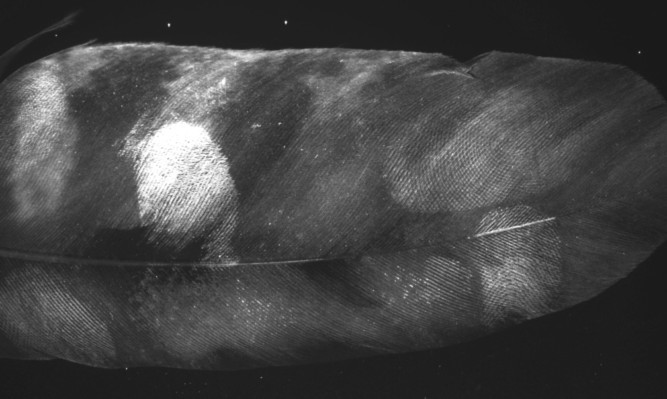Feathers and eggs can now be forensically fingerprinted after scientists at Abertay University became the first in the world to discover how to do so.
The discovery is seen as a major breakthrough in the fight against rising wildlife crime and researchers have now published the first academic research paper on the subject.
Their announcement comes after Aberdeenshire gamekeeper George Mutch was jailed for four months after being captured on video trapping and killing birds of prey.
Scientists now believe that fingerprinting will be a huge boost in tracing egg thieves and those who ill-treat or kill birds of prey and bringing them to the courts.
Although there has been anecdotal evidence of fingerprints being recovered from feathers before, this is the first time that a tried-and-tested method looking specifically at birds of prey has been established and the results published.
Ian Thomson, head of investigations at RSPB Scotland, welcomed the research, hailing it as a “great step forward” in the fight against wildlife crime.
He said: “Since 1994, almost 750 protected birds of prey have been confirmed as being the victims of illegal poisoning, shooting or trapping in Scotland. Although there has been a reduction in the number of cases of illegal egg collection, the practice still exists and there is evidence that illegal egg collectors are now increasingly operating abroad.
“This work carried out by Abertay University is a great step forward in the development of forensic techniques and can only assist in the fight against those who threaten some of our most iconic raptors.”
Since 2006, 2,578 incidents of bird crime involving or targeting wild birds of prey have been reported to the RSPB.
A total of six species of bird of prey feathers (kestrel, sparrowhawk, buzzard, red kite, golden eagle and white-tailed eagle) and seven species of bird of prey eggs (kestrel, sparrowhawk, golden eagle, goshawk, tawny owl, barn owl and long-eared owl) were examined in this research.
The results showed that red and green magnetic fluorescent powders were the most successful at recovering fingerprints from the feathers.
The microscopic weave structure of a feather has been likened to that of fine weave fabrics, such as nylon. The best prints were achieved on feathers with a finer weave.
Black magnetic powder was the most successful at recovering finger marks from eggs.
